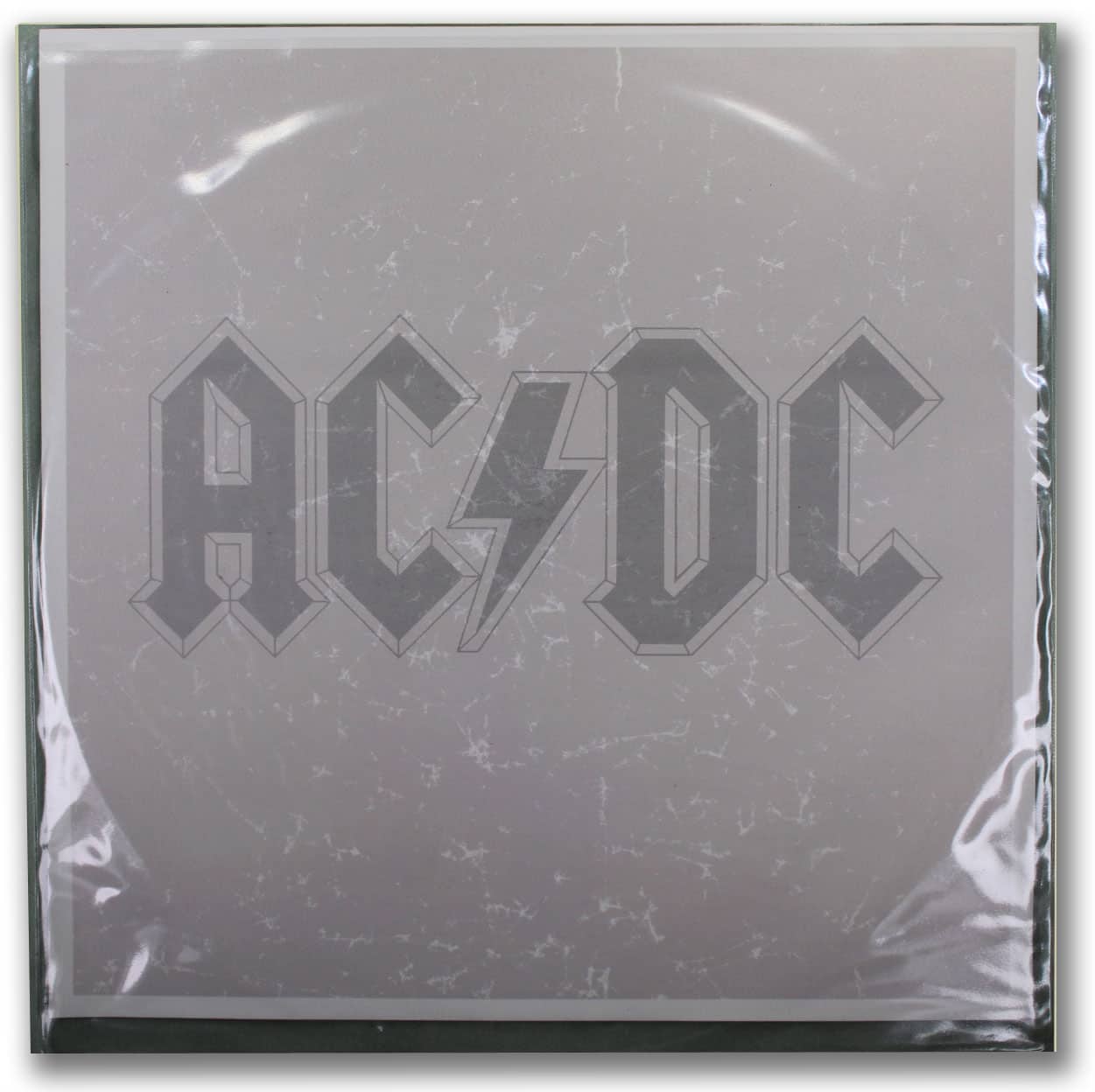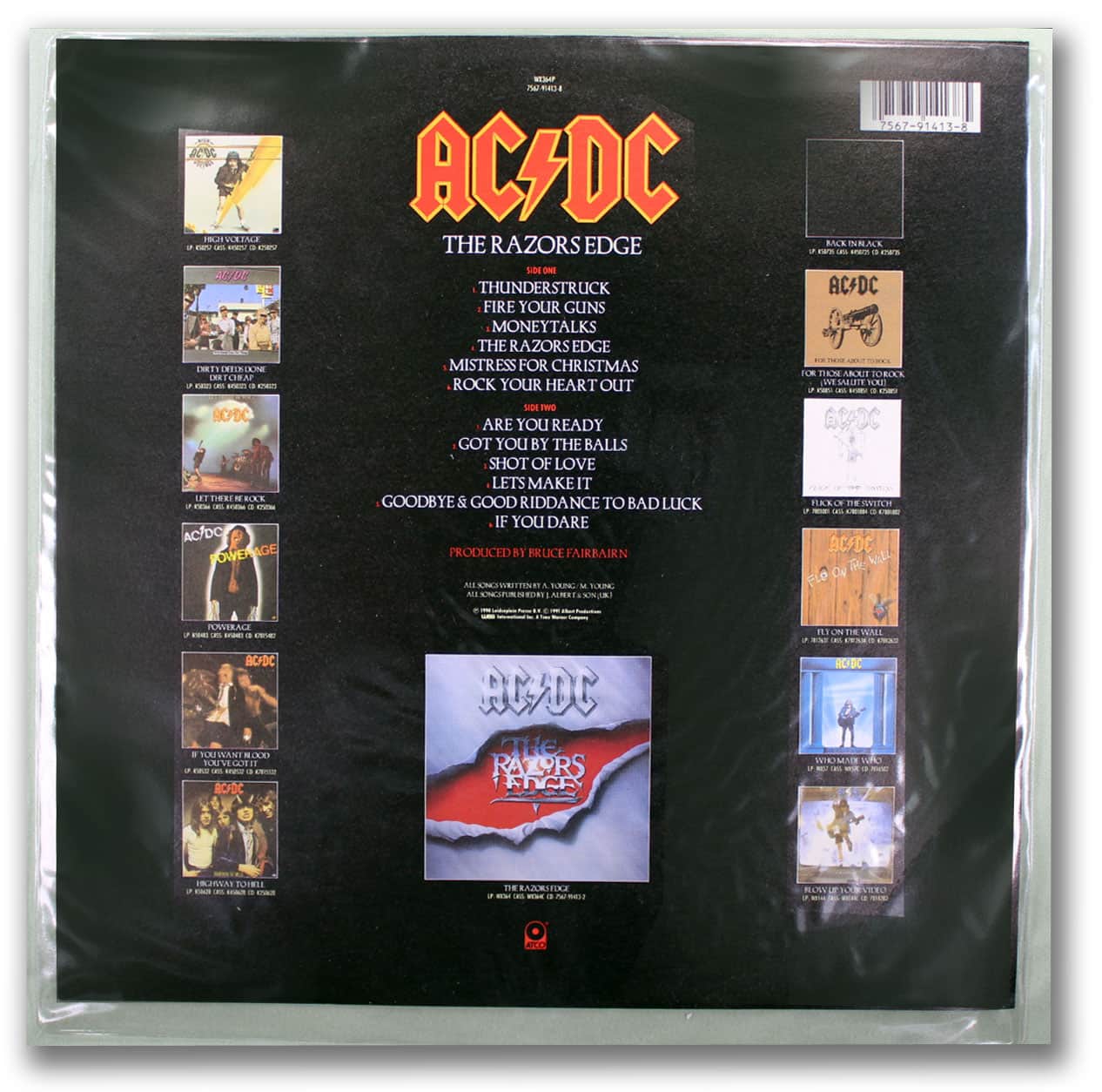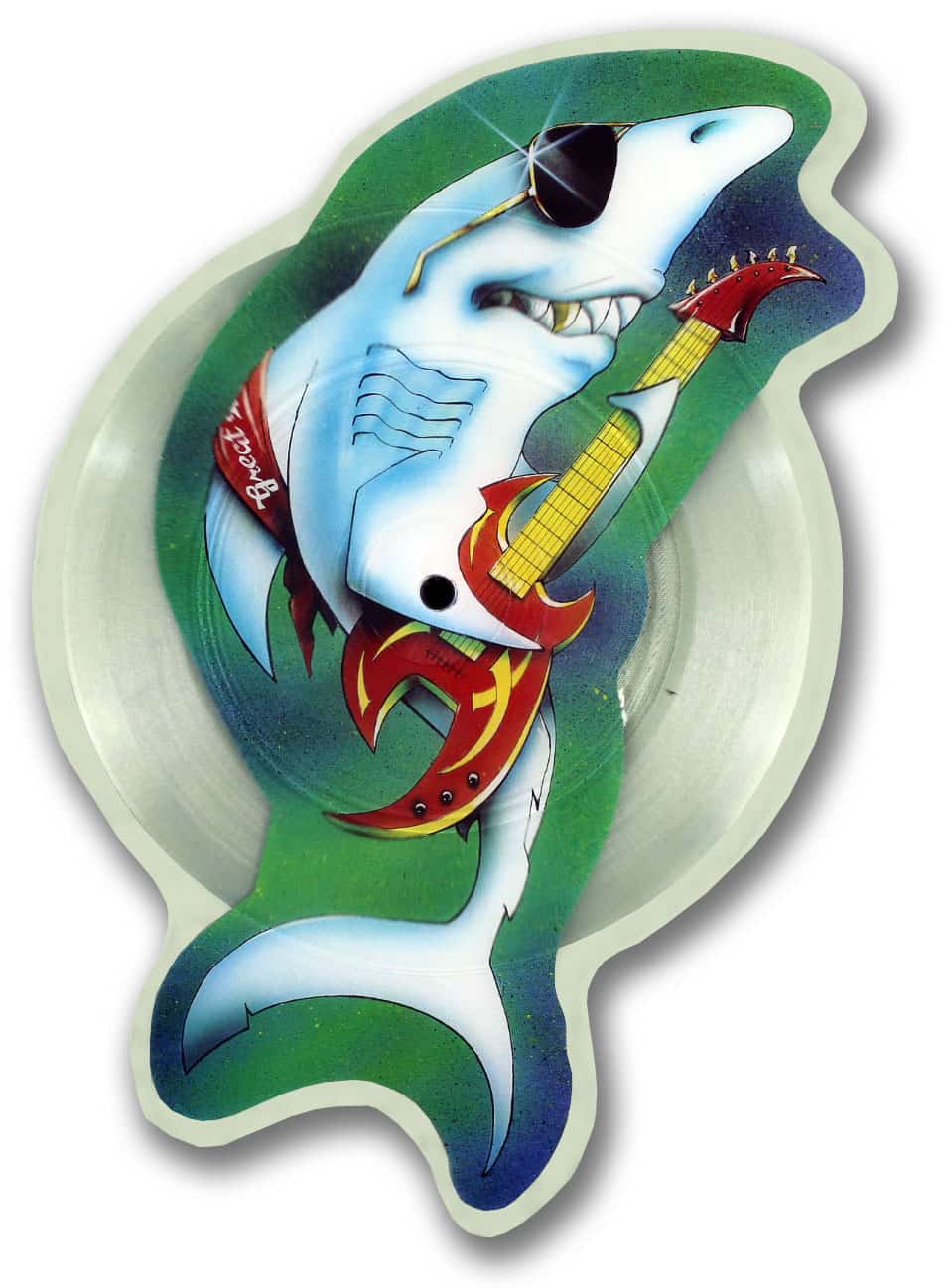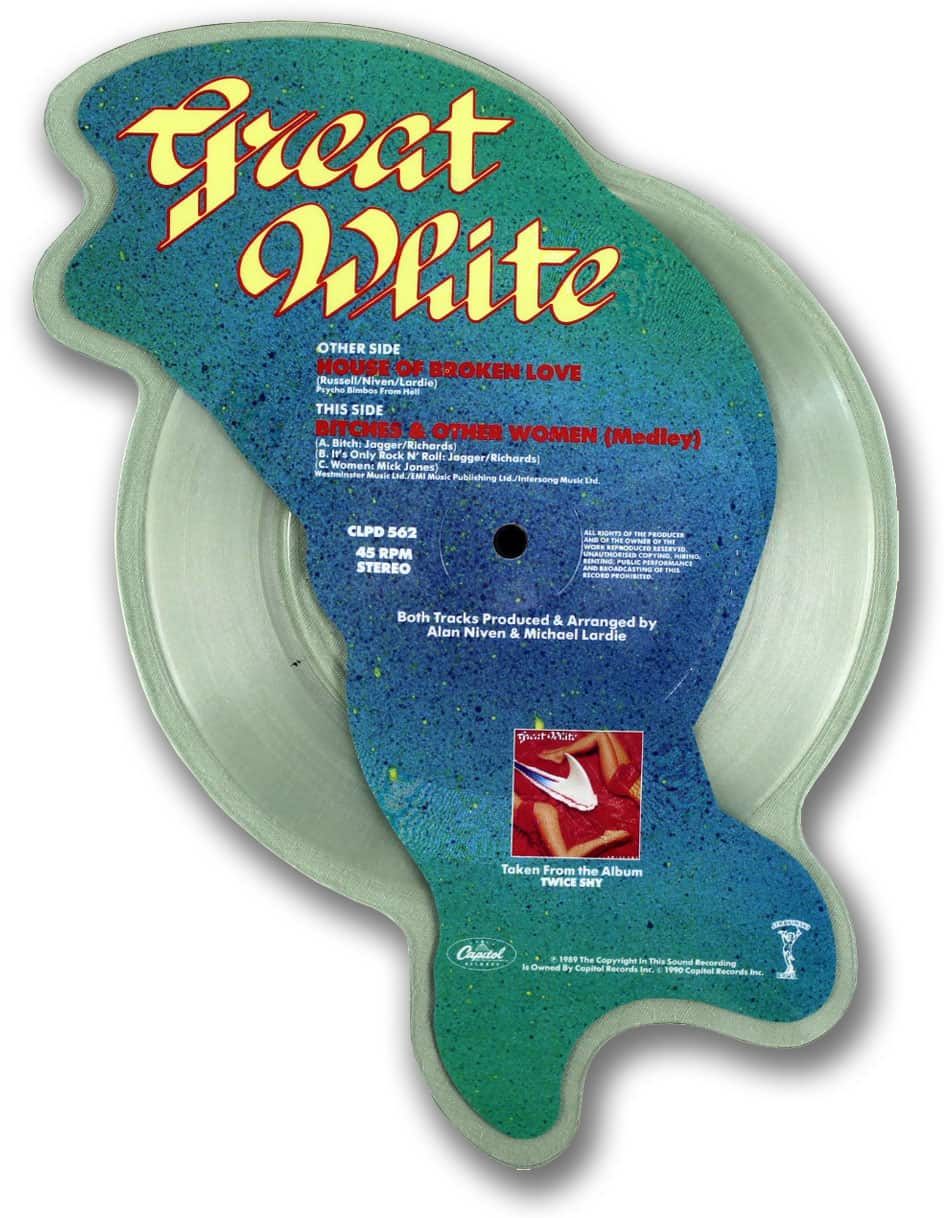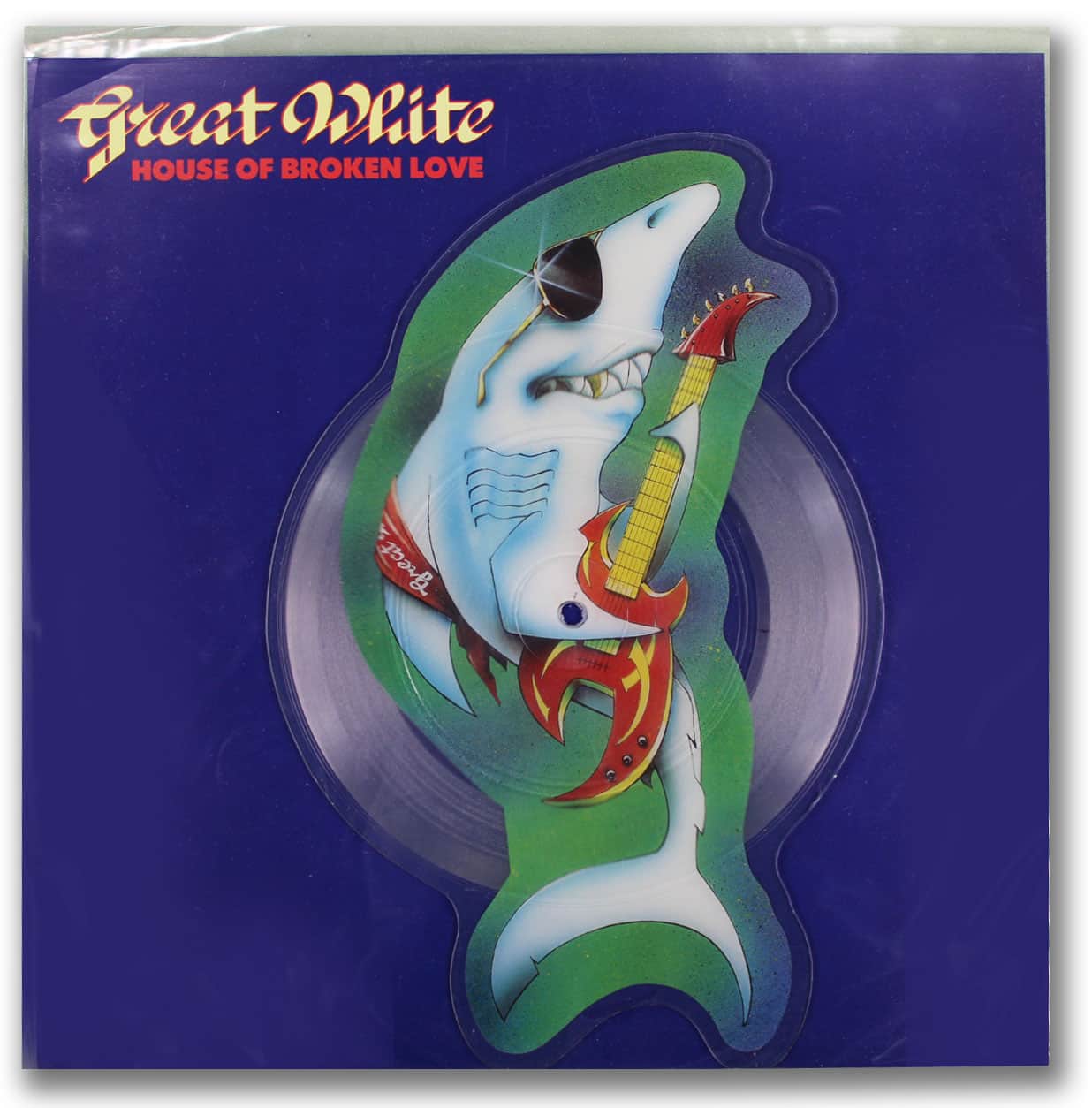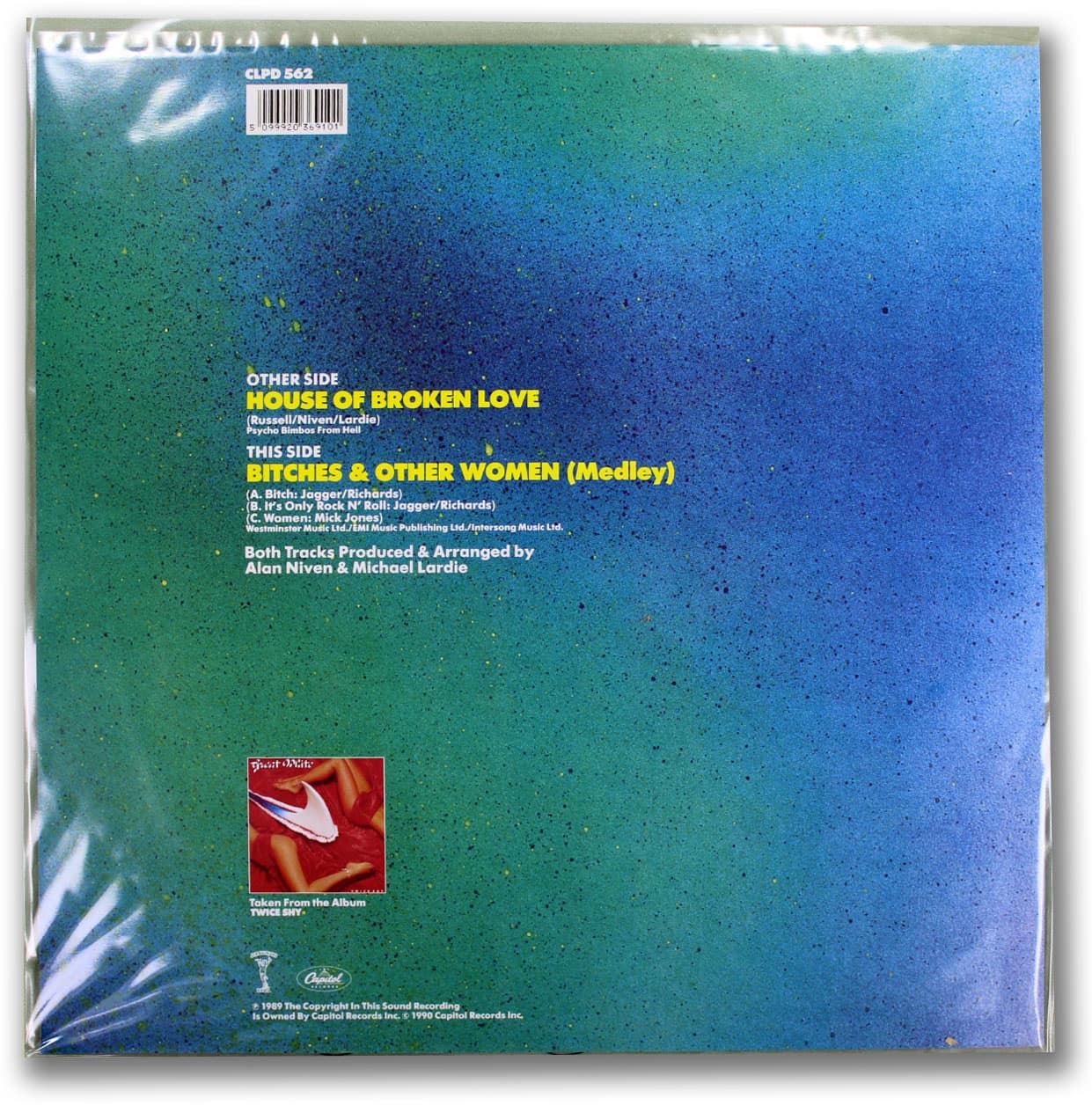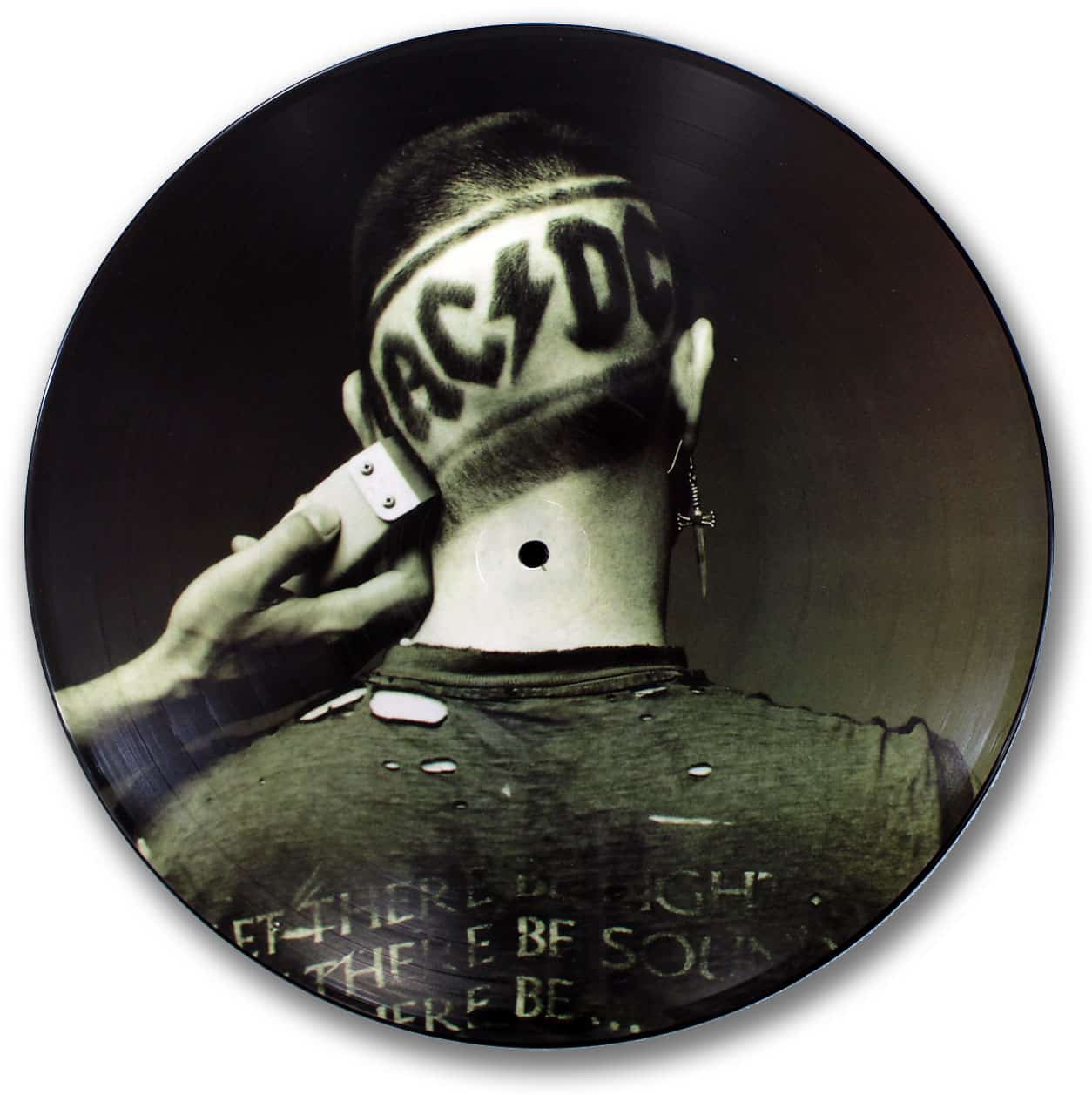
Artist: AC/DC
Album: The Razor’s Edge
Release Date: 1990
Catalog number:ATCO WX364P
Monthly Archives: April 2017
Great White – House of Broken Love
Accept – Accept. Restless and Wild
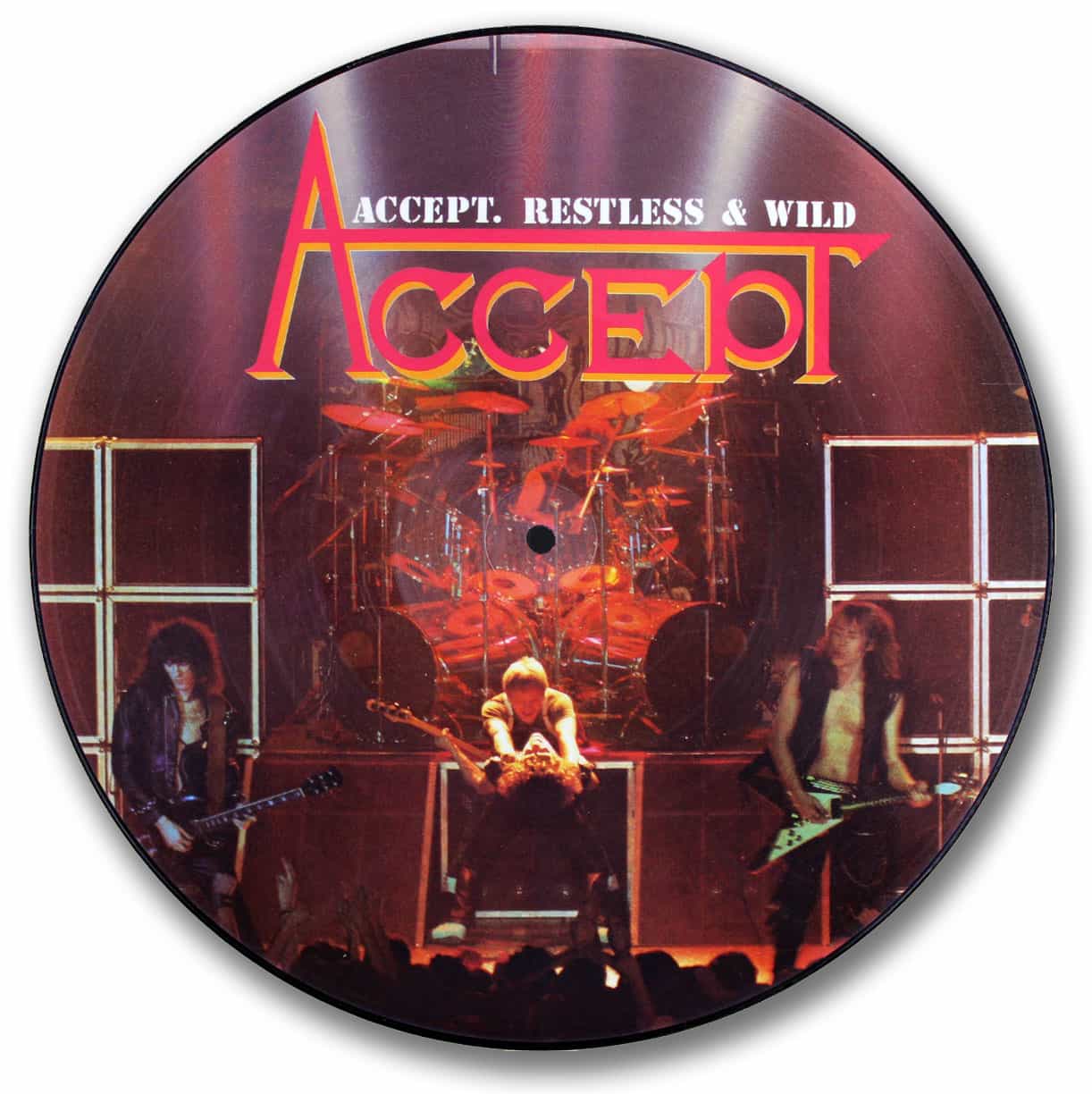
Artist: Accept
Album: Restless and Wild
Release Date: 1985
Catalog number:Heavy Metal HMI PD6
Keywords: Accept, Restless and Wild Picture Disc
Music Video: Restless and Wild by Accept
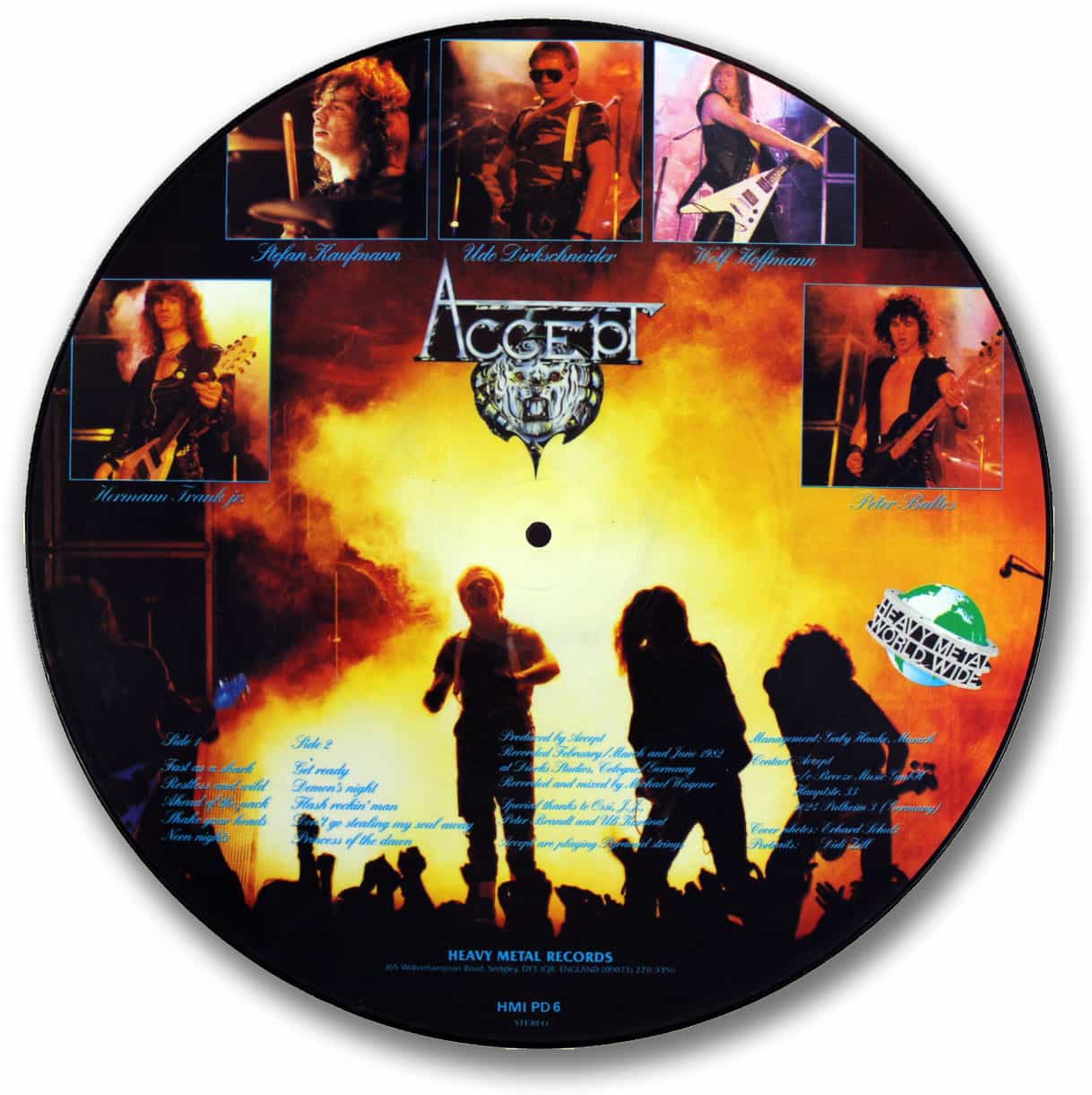 Originating in Solingen, Germany, this group redefined the term “Heavy Metal”.
Originating in Solingen, Germany, this group redefined the term “Heavy Metal”.
This picture disc was pressed in the United Kingdom.
AC/DC – If You want Blood
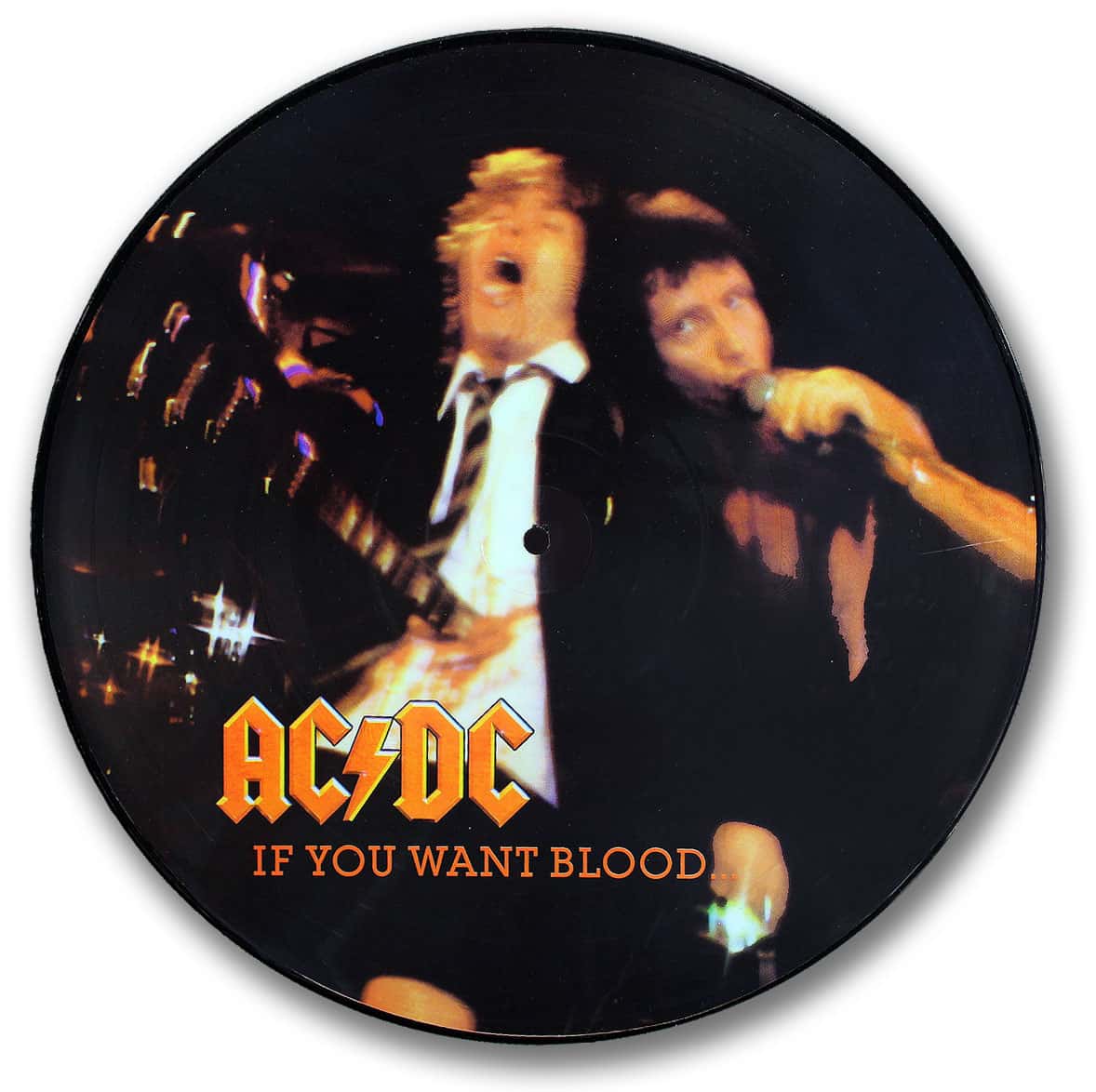 Artist: AC/DC
Artist: AC/DC
Album: If You Want Blood
Release Date: 1978(?)
Catalog number: Atlantic PLP7567 81553-2
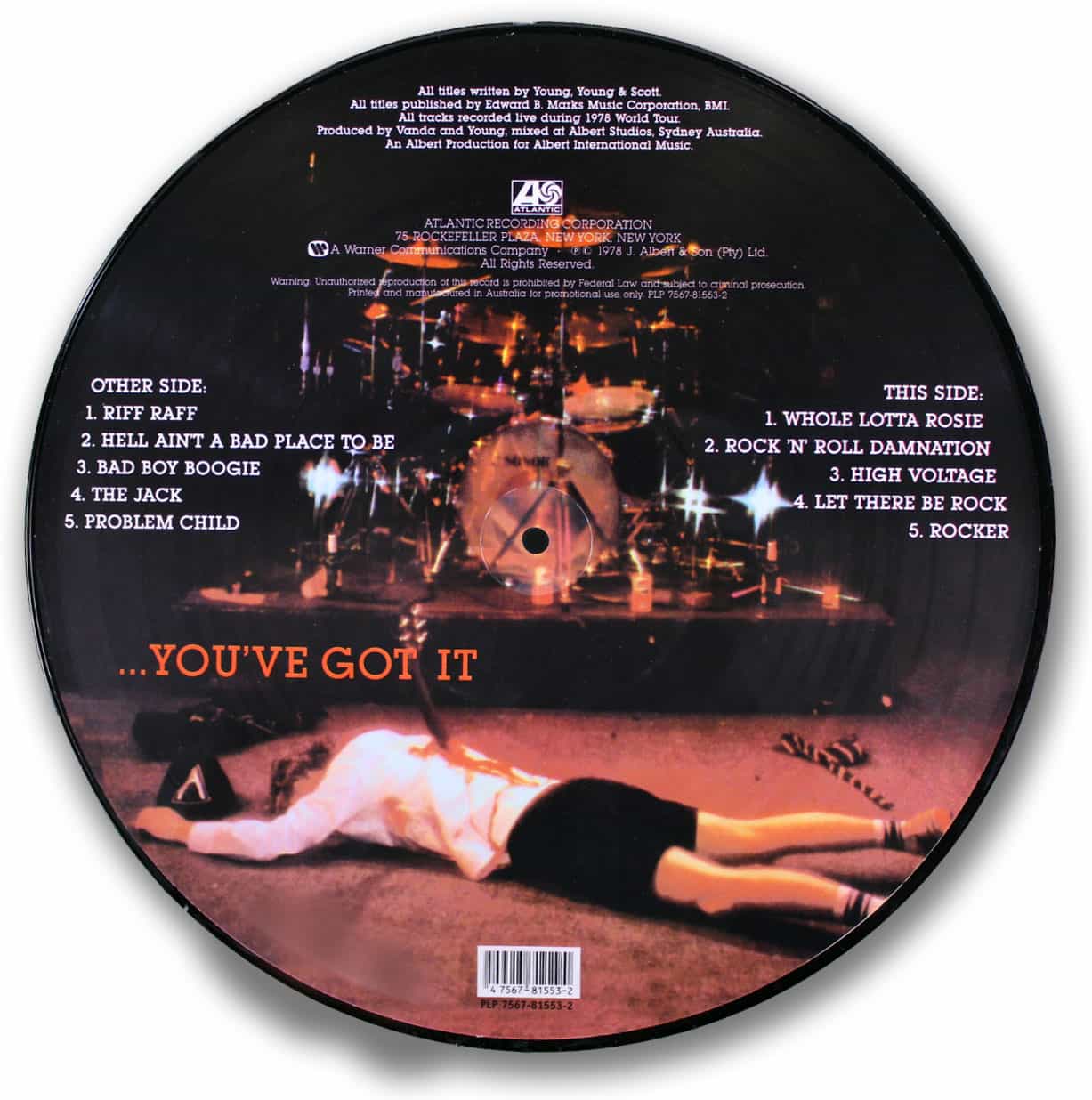 All the tracks on this album were recorded live during the 1978 World Tour.
All the tracks on this album were recorded live during the 1978 World Tour.
Additionally, it is stated on the back of the LP that the disc was “Printed and manufactured in Australia for promotional use only.” Although, based upon the quality of the graphics, we question the authenticity of this pressing.
Stevie Ray Vaughan – Couldn’t Stand the Weather
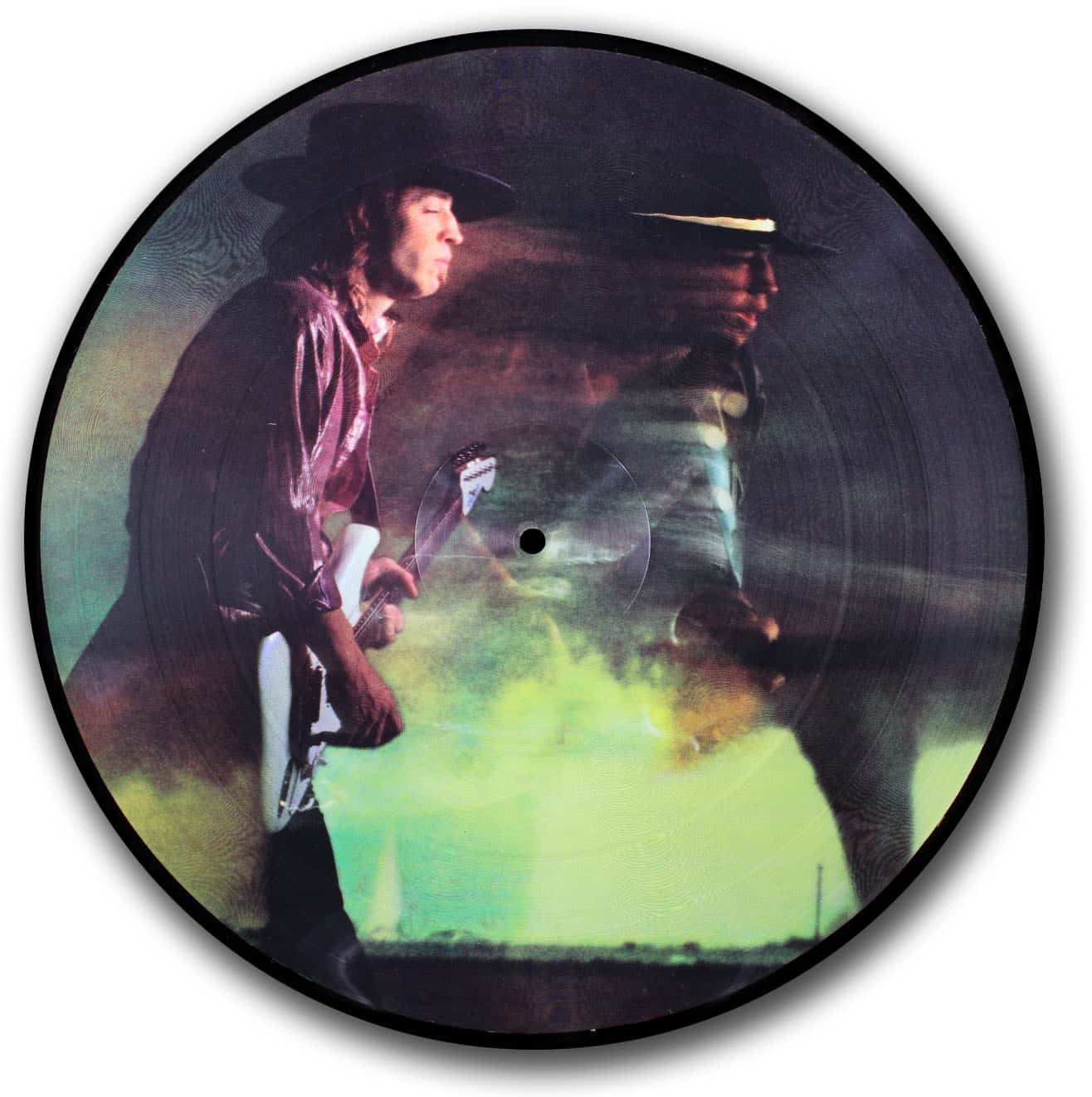 Artist: Stevie Ray Vaughan
Artist: Stevie Ray Vaughan
Album: Couldn’t Stand the Weather
Release Date: 1984
Catalog number:Epic 8E8 39609
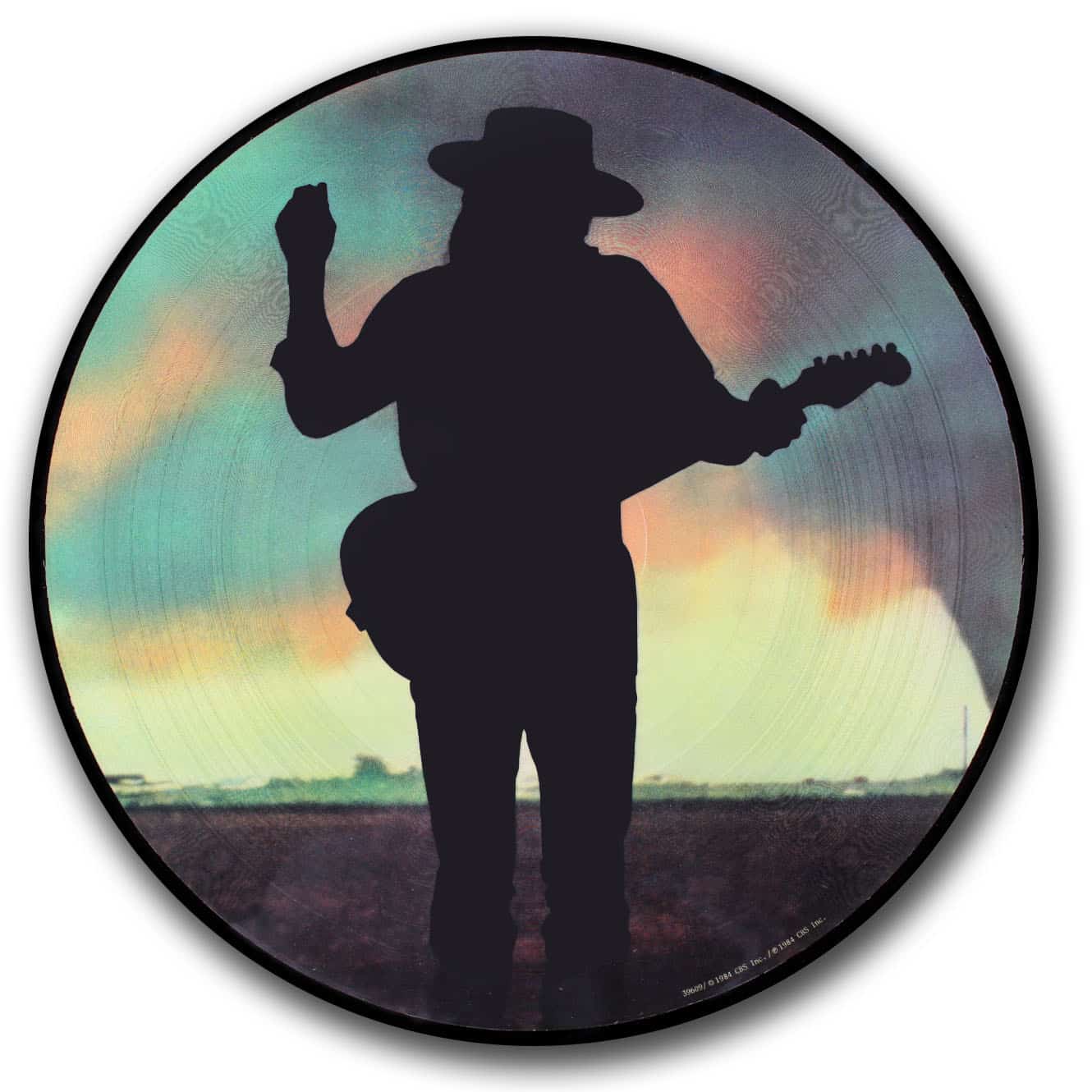 This album would debut the voice of Jimmy Farrar replacing Danny Joe Brown. Sales of this LP would drop off because of the change in the line-up. Never the less, the popularity of this picture disc still runs high.
This album would debut the voice of Jimmy Farrar replacing Danny Joe Brown. Sales of this LP would drop off because of the change in the line-up. Never the less, the popularity of this picture disc still runs high.
This is disc three of the four Molly Hatchet pic discs which appeared as a promo and with a pressing of a very low 1350 copies.
Molly Hatchet – Beatin’ the Odds
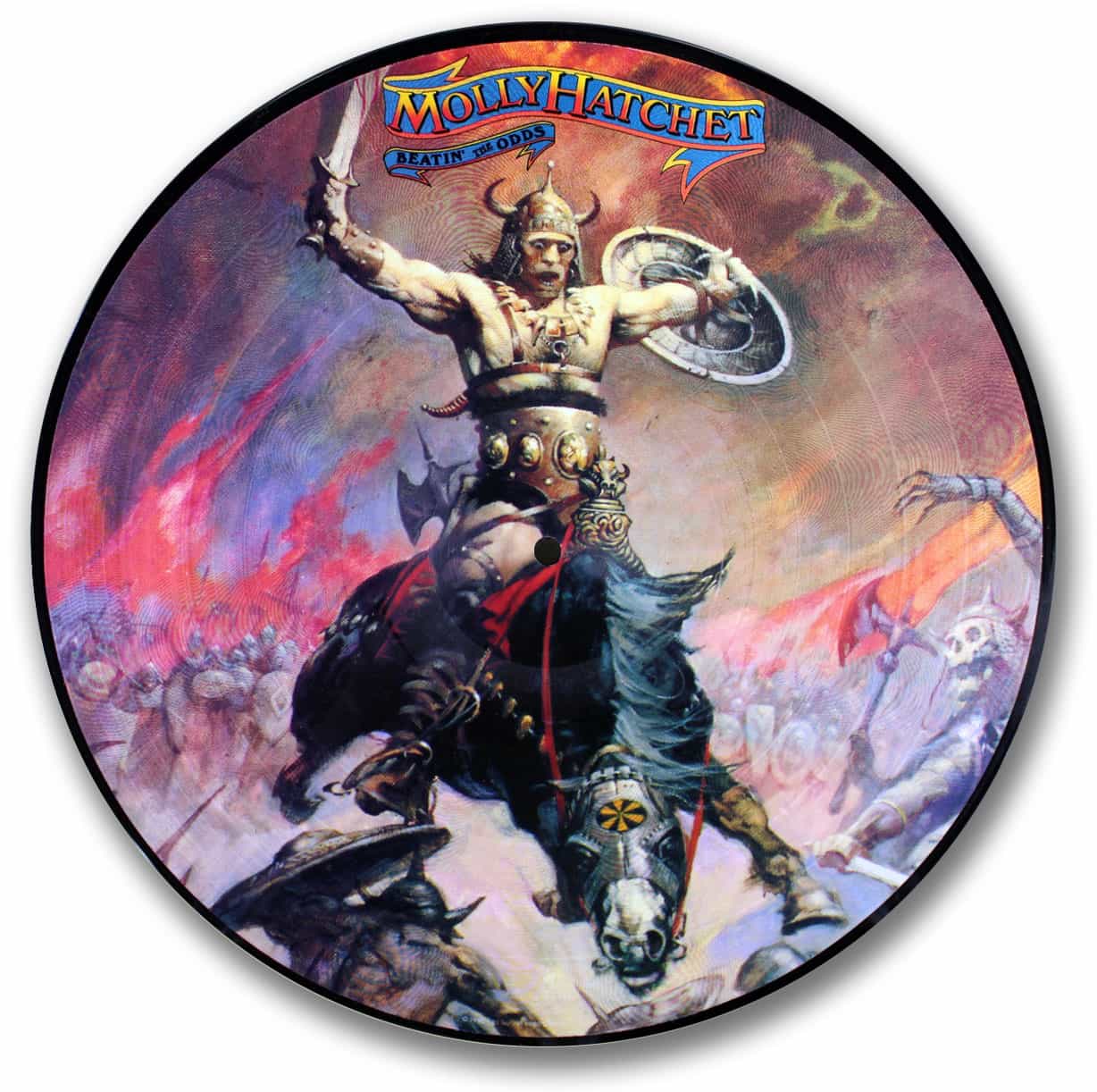 Album: Beatin’ the Odds
Album: Beatin’ the Odds
Release Date: 1980
Catalog number:Epic AS 99 884
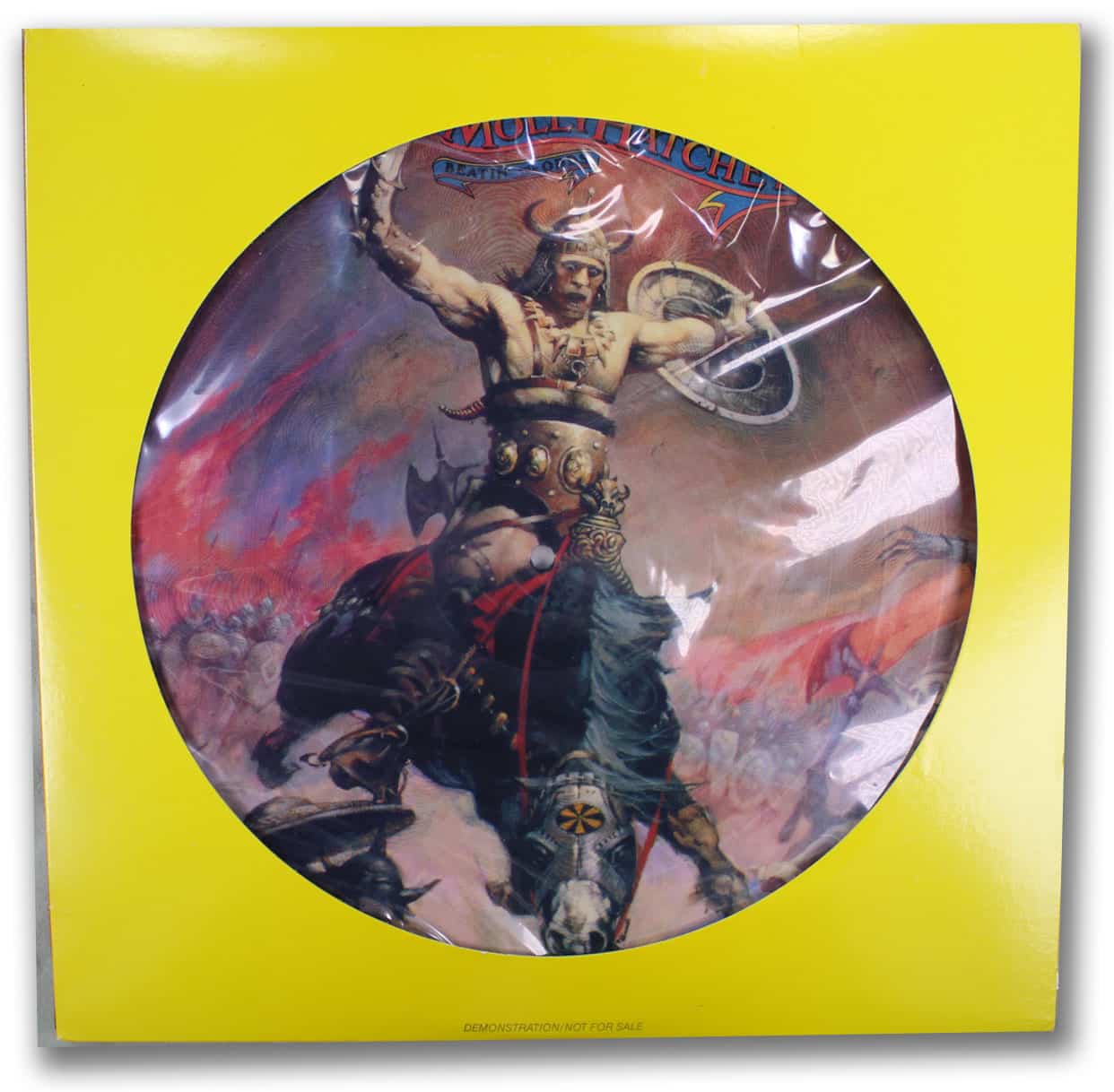 This album would debut the voice of Jimmy Farrar replacing Danny Joe Brown. Sales of this LP would drop off because of the change in the line-up. Never the less, the popularity of this picture disc still runs high.
This album would debut the voice of Jimmy Farrar replacing Danny Joe Brown. Sales of this LP would drop off because of the change in the line-up. Never the less, the popularity of this picture disc still runs high.
This is disc three of the four Molly Hatchet pic discs which appeared as a promo and with a pressing of a very low 1350 copies.
“Album Art” – a brief history of the Picture Disc.
From this collector’s point of view, one of the more fascinating areas of recorded music is that of picture discs.
The most simplistic definition of a picture disc is the incorporation of graphics and music onto a round or shaped disc. A more complete description of a picture disc record (modern day) or commonly referred to as a pic-disc, is a record containing a base layer of PVC (poly vinyl chloride), surrounded on both sides with a photographic layer, and finished up with a clear layer of PVC, again on both sides of the disc.
As the five layers are combined, a continuous groove of music is pressed into the playing surface. Any excess vinyl is then trimmed from the surrounding area giving the recording a clean edge and thereby completing the disc. Although pleasing to the eye, the overall sound quality of these recordings are not comparable to the better sounding black vinyl discs. This is due in part to ultra thin outside layers of clear vinyl which supports the grooves.
The origin of the picture disc or record dates back to the early 1920s. One of the first companies to develop these discs was the Musika Postkarte Co. of Germany. Other companies involved with this process were Trusound of Great Britain, Sav-Way Industries and the RCA Victor Corporation, both of the U.S.
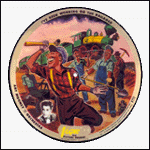
Vogue discs were made of vinyl over aluminum. Often the use of various materials was employed in the manufacture of these records. This included cardboard, shellac, plastic, wax, and aluminum. One of the most renowned manufacturers using aluminum in their process was Sav-Way Industries of Detroit Michigan. They sold their recordings under the “Vogue” name and produced the Vogue disc from May of 1946 until April of 1947 with a catalog of approximately 74 picture discs. As the Second World War ended, vinyl eventually came into play. But it wasn’t until the l960s that vinyl became the primary material in the manufacture of all records.
Up to this time, picture discs were generally available commercially. Though, with the post 1970s, production became more of a promotional process. They were primarily used by the record labels to “hype” the music of various artists or groups, and eventually distributed to radio stations and record stores as incentives or gifts. Promotional copies were generally pressed in extremely small quantities, and sometimes as little as 100 copies of a disc were released to a worldwide market. Because of their limited nature and unique appearences, “promos” are highly sought after by collectors and fans alike.
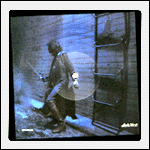
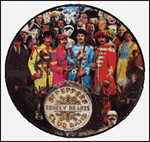
Starting in the late 1970s, a push by several recording companies including Capitol, Epic, and Columbia Records, was made to bring picture discs onto the commercial market in vast numbers. Groups such as “The Beatles”, “Pink Floyd”, “Meat Loaf” and “The Steve Miller Band” soon found their way to the shelves of the domestic and European markets.
As the 1980s came about, commercial production of picture discs was in full swing, although production eventually switched from domestic presses to the British and European plants. Towards the latter half of the 1980s, interest in picture discs began to diminish.
With the arrival of the 90s and the demise of vinyl records, the production of picture discs was again used somewhat promotionally or limited to small batches. Also during this time, the market witnessed a huge increase in unauthorized or “bootleg” pressings. The bulk of these discs appear to have originated from the European and Asian plants.
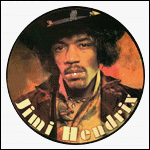
As we enter the 21st century, the future is bright for the picture disc market. With sites such as Ebay, Yahoo, and hundreds of online record dealers, the average collector need not go any further than his or her computer, to acquire a piece of “album art” that they will forever cherish.
Jeff Bender – 2000
About the Author
Jeff Bender has been an avid collector of vinyl recordings for over 40 years. His interest started while employed as a manager for several retail record chains located in the state of Maryland. He further enhanced his knowledge while hosting a “Rock and Roll” show for WGTB-FM out of Washington, D.C. As a hobby, he is currently the Webmaster for several music related websites, which includes the Vinyl Underground.
Metallica – Master of Puppets
 Artist: Metallica
Artist: Metallica
Album: Master of Puppets
Release Date: 1986
Catalog #:Music for Nations MFN 60P
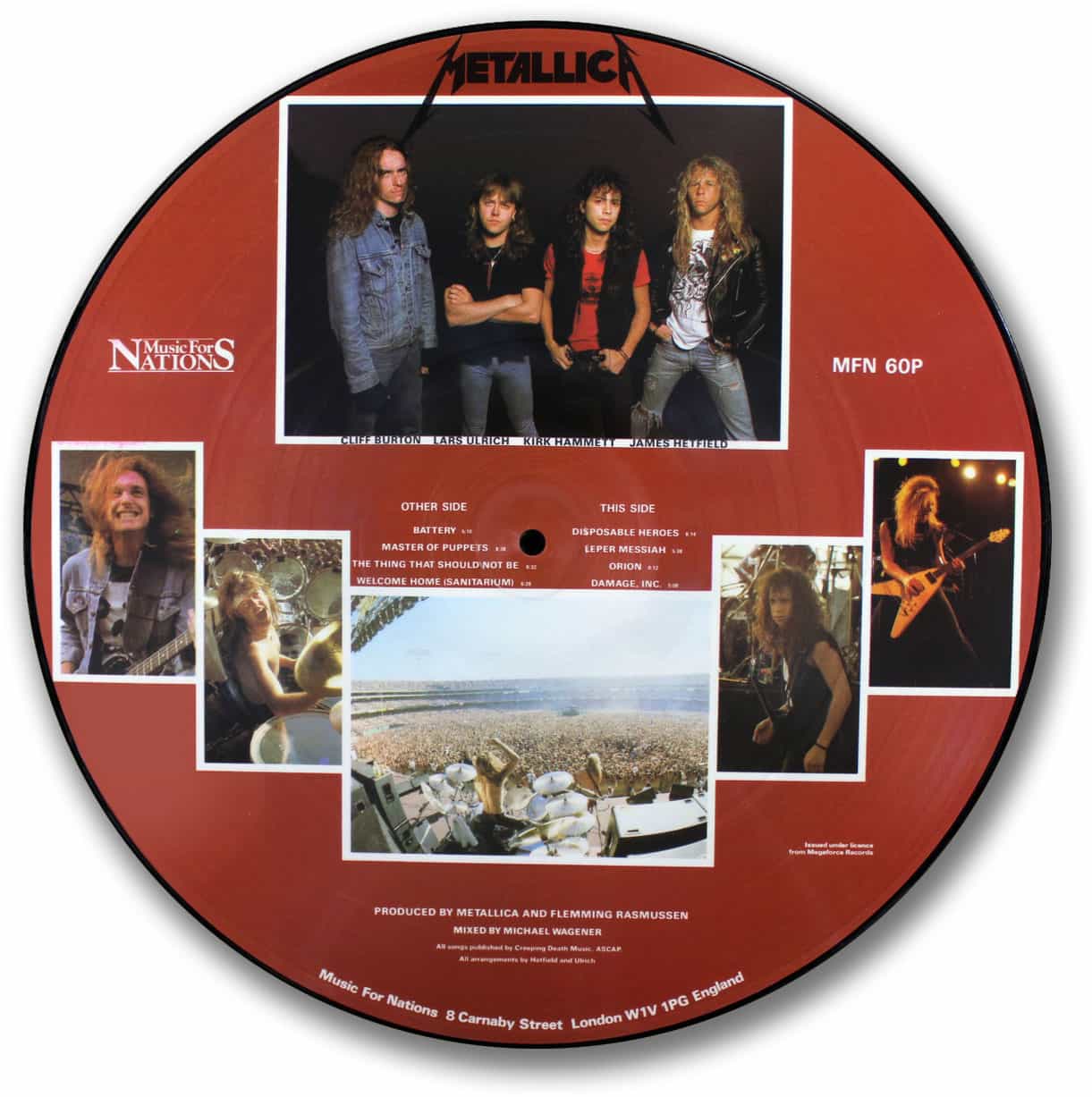 “Master of Puppets” is said to be the finest album ever released by Metallica, and would be the last studio album in which Cliff Burton would appear. He was killed in a bus accident on September 27,1986.
“Master of Puppets” is said to be the finest album ever released by Metallica, and would be the last studio album in which Cliff Burton would appear. He was killed in a bus accident on September 27,1986.
This disc was pressed in the U.K. with a issue of around 5,000 copies.
Kiss – Love Gun
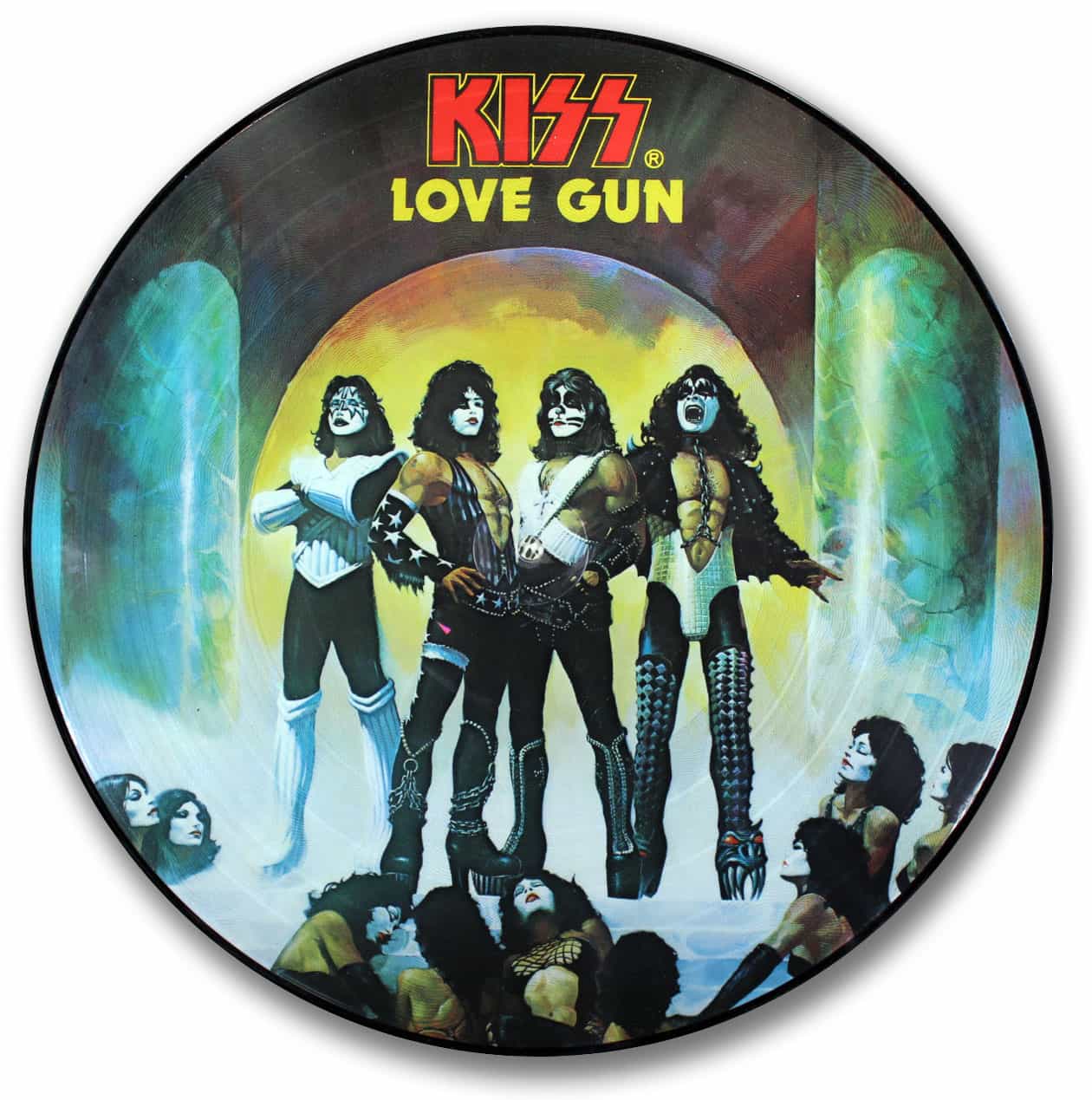 Artist: Kiss
Artist: Kiss
Album: Love Gun
Release Date: 1987
Catalog number:Phonogram PIC 6399 063
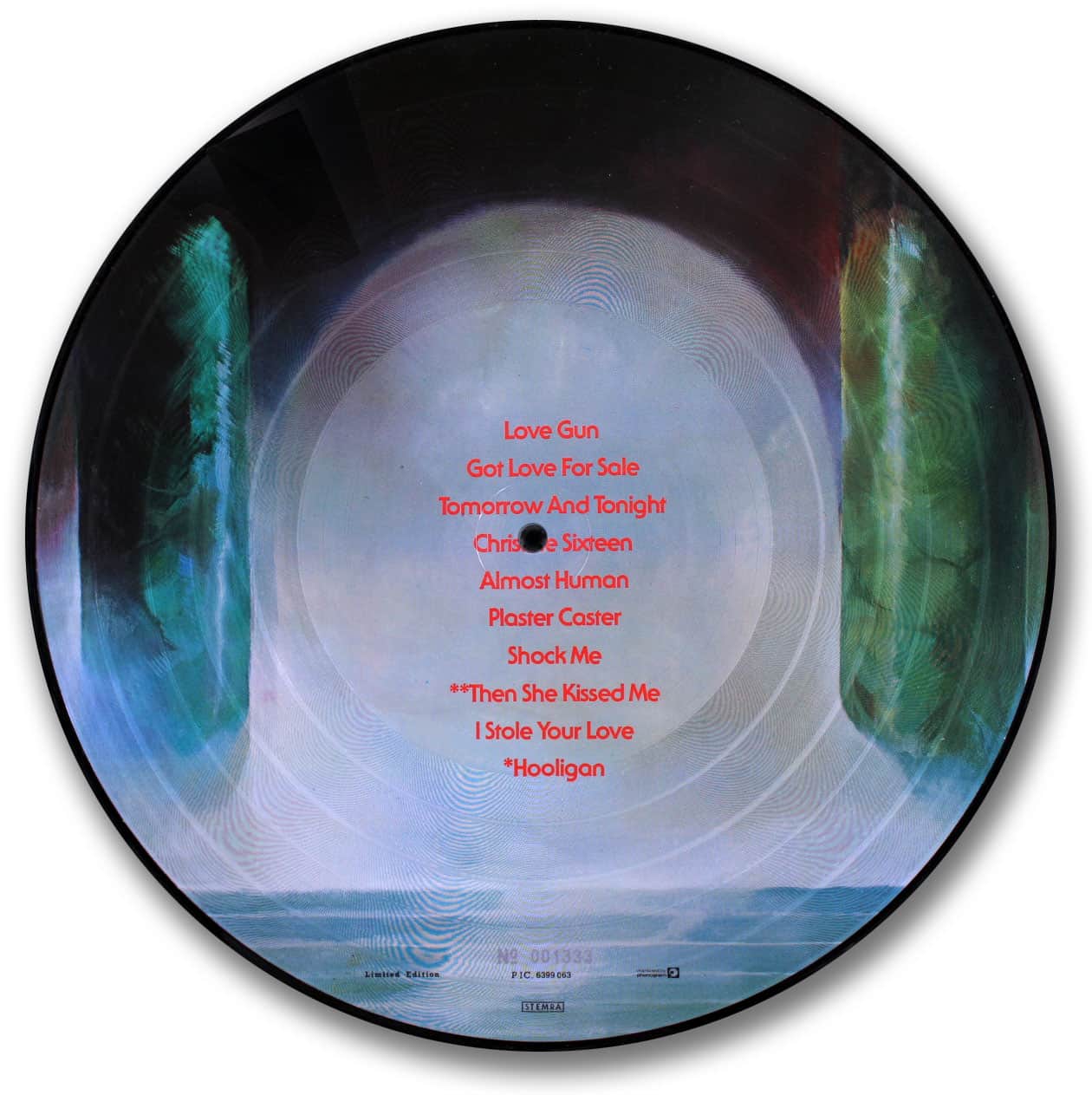 Kiss released the original album in 1977 and feature the songs “Love Gun” and “Christine Sixteen” among others. This picture disc version was made in the Netherlands and contains all the same music.
Kiss released the original album in 1977 and feature the songs “Love Gun” and “Christine Sixteen” among others. This picture disc version was made in the Netherlands and contains all the same music.
The original Dutch pressings were individually numbered on the lower middle of side two and were usually limited to about 1500 copies.
Metallica – Jump in the Fire
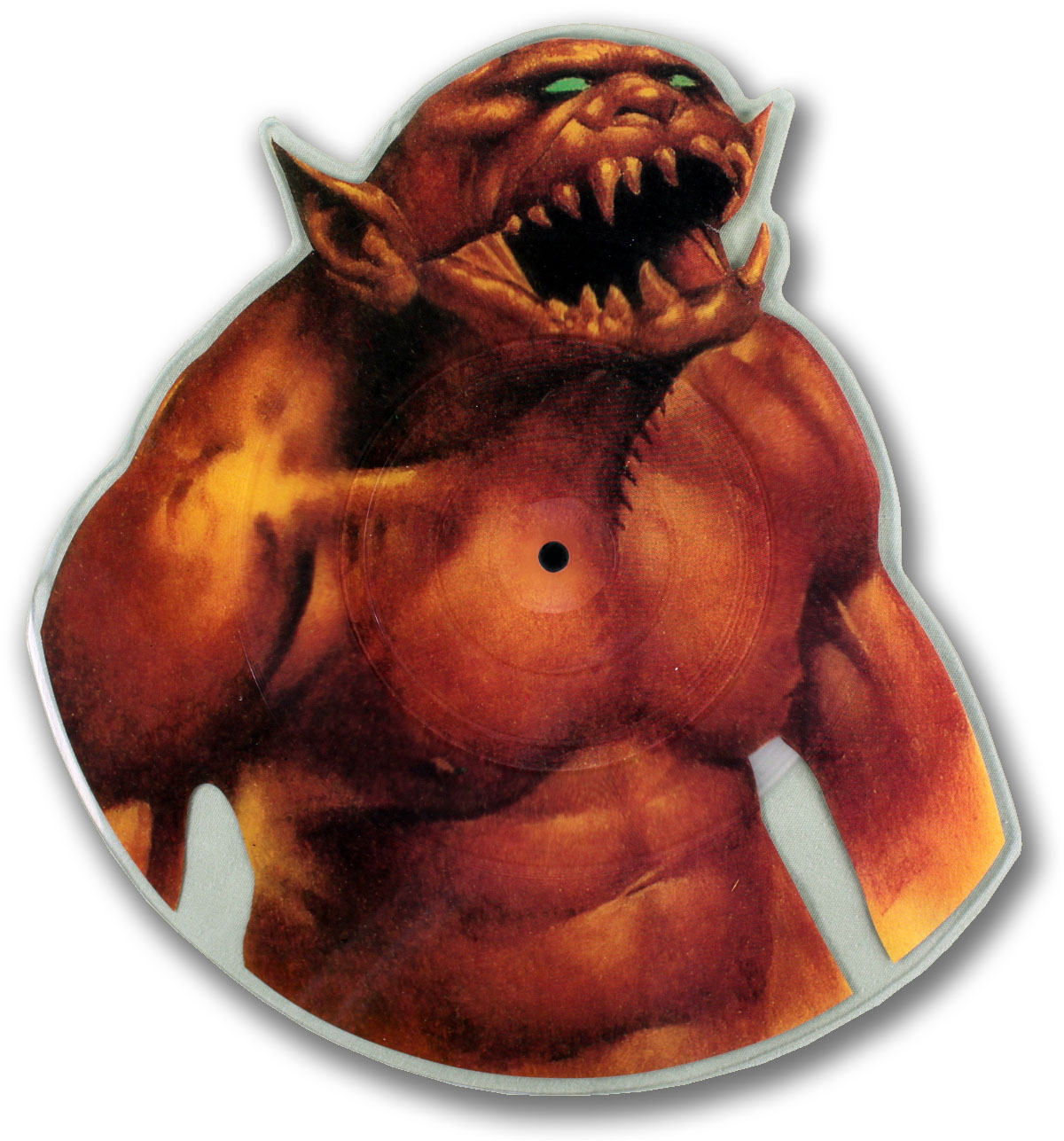
Artist: Metallica
Album: Jump in the Fire
Release Date: 1986
Catalog #:Music for Nations PKUT 105
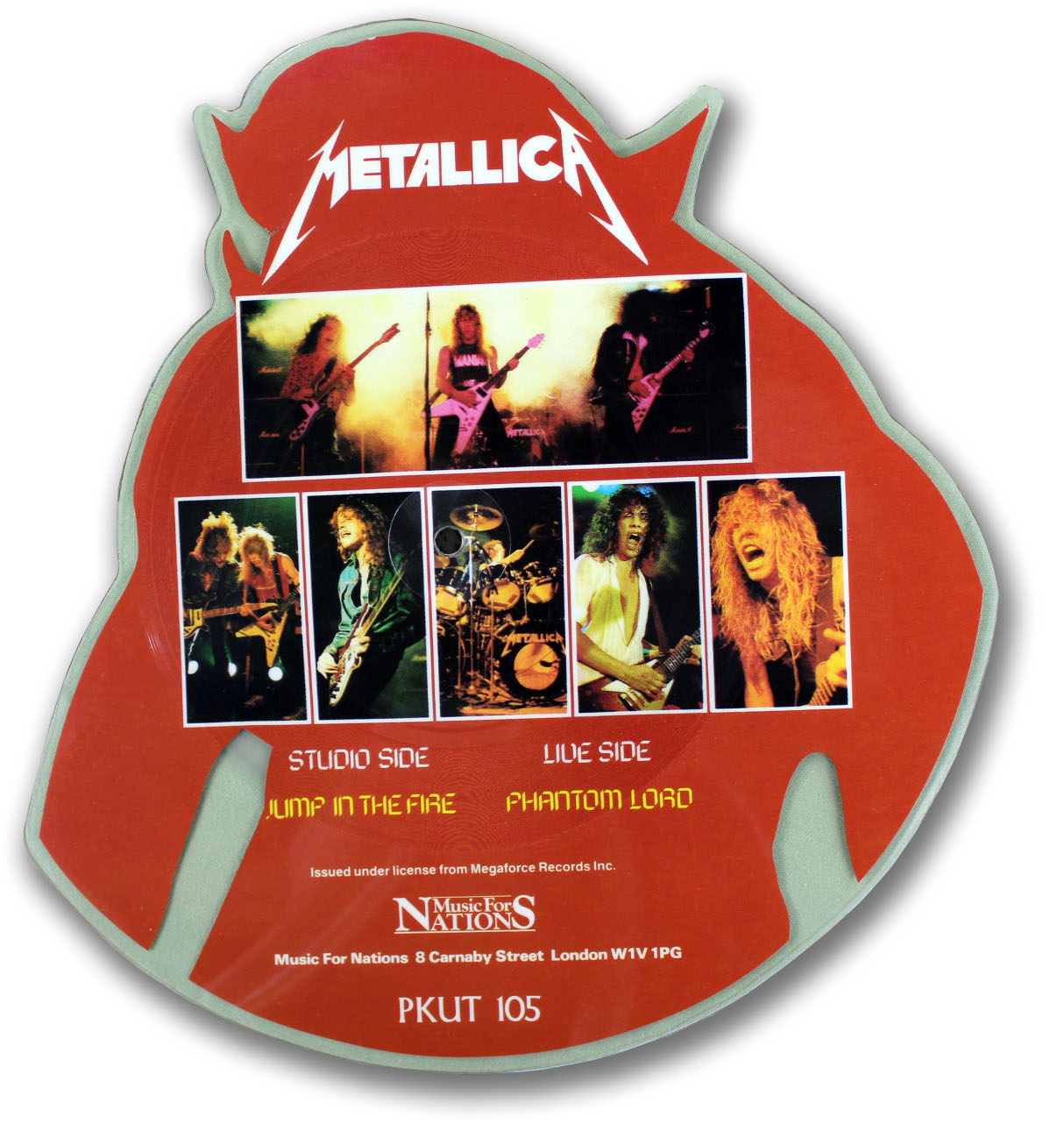
This disc was issued in it’s “shaped” form in March of 1986. On the flip side of the disc is a live version of “Phantom Lord”. It was sold commercially but limited to about 6,000 copies and is highly prized by Metallica fans and collectors alike.

